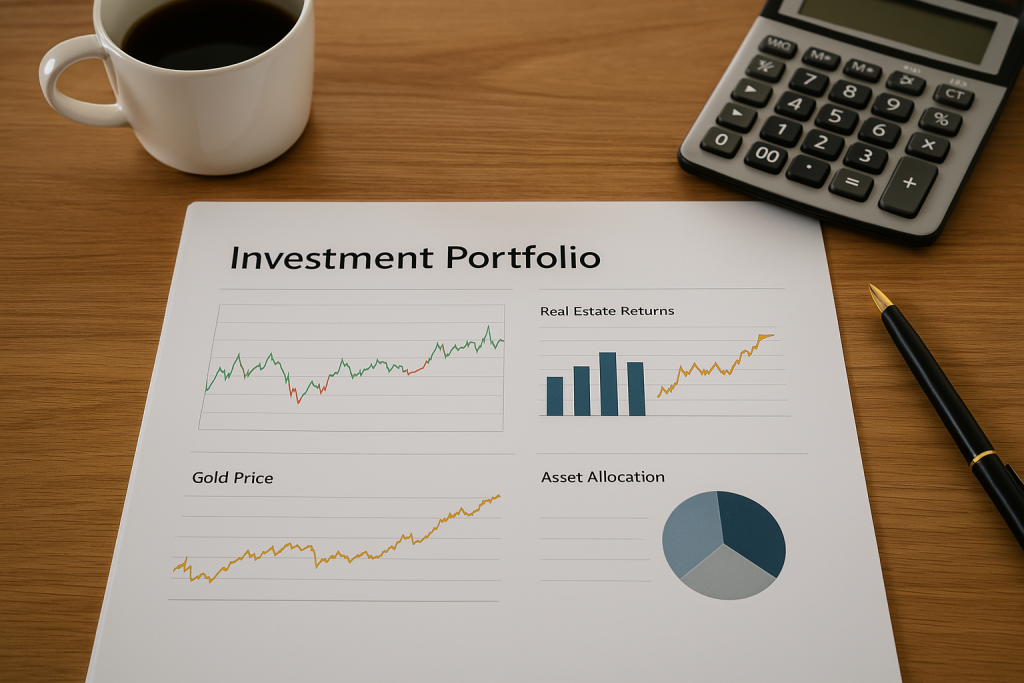No matter how prepared you are, financial market volatility has a way of catching you off guard. One week your portfolio looks solid, and the next, headlines start flashing red. It’s in these moments that the strength of your financial plan is truly tested.
You don’t need to be an expert to protect what you’ve built—but you do need clarity. Reacting out of fear or emotion is what leads most people into trouble. With a few intentional steps, it’s possible to face uncertainty with confidence, not panic.
Why market shifts feel so personal?

Even if we tell ourselves not to watch the market every day, it’s hard to ignore when prices swing wildly. When your retirement fund drops or your savings feel threatened, staying calm isn’t easy. And that’s what makes financial market volatility so tricky—it hits both logic and emotion.
But those feelings are normal. What matters is what you do with them. Stepping back, revisiting your goals, and looking at the big picture can make a huge difference. Perspective won’t erase volatility, but it helps you move through it without losing your direction.
Panic sells often do more damage
It’s common to want out when the numbers drop. But selling at the first sign of trouble usually locks in losses that could’ve been temporary. Many people look back and regret those fast decisions—and rebuilding after that is much harder.
Instead, learning to pause is a skill worth developing. If your investments are aligned with your long-term goals, short-term dips don’t have to derail you. Even during periods of intense financial market volatility, staying put can be the most strategic choice.
Where diversification quietly saves the day
Not all investments behave the same way. That’s the beauty of diversification—it spreads out your risk. If one area takes a hit, another might hold steady, keeping your overall portfolio more balanced than you think.
Imagine a portfolio with stocks, bonds, real estate, and even some gold. While one reacts to inflation, another responds to interest rates. This kind of mix gives you breathing room, especially when financial market volatility starts to make headlines.
Building your foundation before storms arrive
Risk tolerance isn’t just a term—it’s about knowing how much you can handle without losing sleep. Some people are okay riding the wave. Others need more predictability. Understanding that helps shape the structure of your portfolio.
Adding a layer of protection doesn’t mean going ultra-conservative. It means including assets that bring stability—like government bonds or dividend-paying stocks—that tend to hold up when the rest of the market doesn’t. They give you options instead of dead ends.
Thinking beyond the stock market
| Investment Type | How It Helps | What to Consider |
|---|---|---|
| Real Estate | Generates income and value | Location and liquidity matter |
| Treasury Bonds | Offers steady, low-risk returns | Sensitive to rising interest rates |
| Gold or Commodities | Can hedge inflation and crisis | May be volatile short-term |
These aren’t magic solutions, but they add resilience. During moments of financial market volatility, a rental property or a bond ladder won’t eliminate the noise—but they’ll keep you from being entirely at the mercy of it. These options help you avoid the feeling of being cornered. When stocks dip, they remind you that your entire financial future isn’t tied to one market’s mood.
Your emergency fund is your safety net
Let’s be honest: no one gets excited about building an emergency fund. But when income slows or markets sink, having that cushion gives you something no investment can—time. Time to think, adjust, and avoid decisions made in panic. If financial market volatility starts affecting your cash flow, you’ll be glad you planned ahead. Even three months of expenses in a separate account can keep you steady when everything else feels uncertain.
When it makes sense to get guidance
You don’t need to do this alone. A good financial advisor doesn’t just manage numbers—they help manage fear. They keep you grounded when your instincts tell you to bail. And they ask the questions you might be too close to see.
In times of heavy financial market volatility, that outside perspective becomes especially valuable. It’s not about someone telling you what to do—it’s about having someone walk through it with you, so you don’t have to rely on guesswork.
Stay grounded, but know when to adjust
It’s one thing to be patient. It’s another to be stuck. When life changes—new goals, new family dynamics, or just a different season—your financial strategy should evolve with you. Ignoring that can leave you out of sync with your own life.
Volatility isn’t always a crisis. Sometimes it’s just a reminder to check in. Does your plan still match who you are and where you’re going? If the answer is no, it might be time to tweak things—not overhaul, just adjust with care.
Time, not timing, builds real wealth
Trying to guess the best moment to buy or sell is a losing game. No one gets it right consistently—not even professionals. What works is consistency. Contributions made month after month, decisions rooted in purpose, and the ability to stay in the game.
Financial market volatility will always come and go. But if your strategy is built on values instead of headlines, you’re already ahead. What you do during the hard moments is what shapes your financial future the most.
A final word on staying power
Remember, markets don’t reward the quickest reactions—they reward resilience. The real strength in navigating financial market volatility lies in your ability to stay grounded when everything around you feels uncertain. It’s not about pretending the noise doesn’t exist—it’s about acknowledging it without letting it control your decisions. That level of composure comes from preparation, patience, and perspective.
Over time, even the most dramatic dips become just another chapter in your financial journey. What sets confident investors apart isn’t luck or perfect timing—it’s their willingness to stick to a plan when others are panicking. When you build a strategy rooted in purpose and not panic, you allow time to do the heavy lifting.
Financial market volatility will continue to rise and fall—but your goals shouldn’t have to. With a strong foundation, smart diversification, and the ability to pause before reacting, you’ll weather the storms and stay focused on what truly matters.



